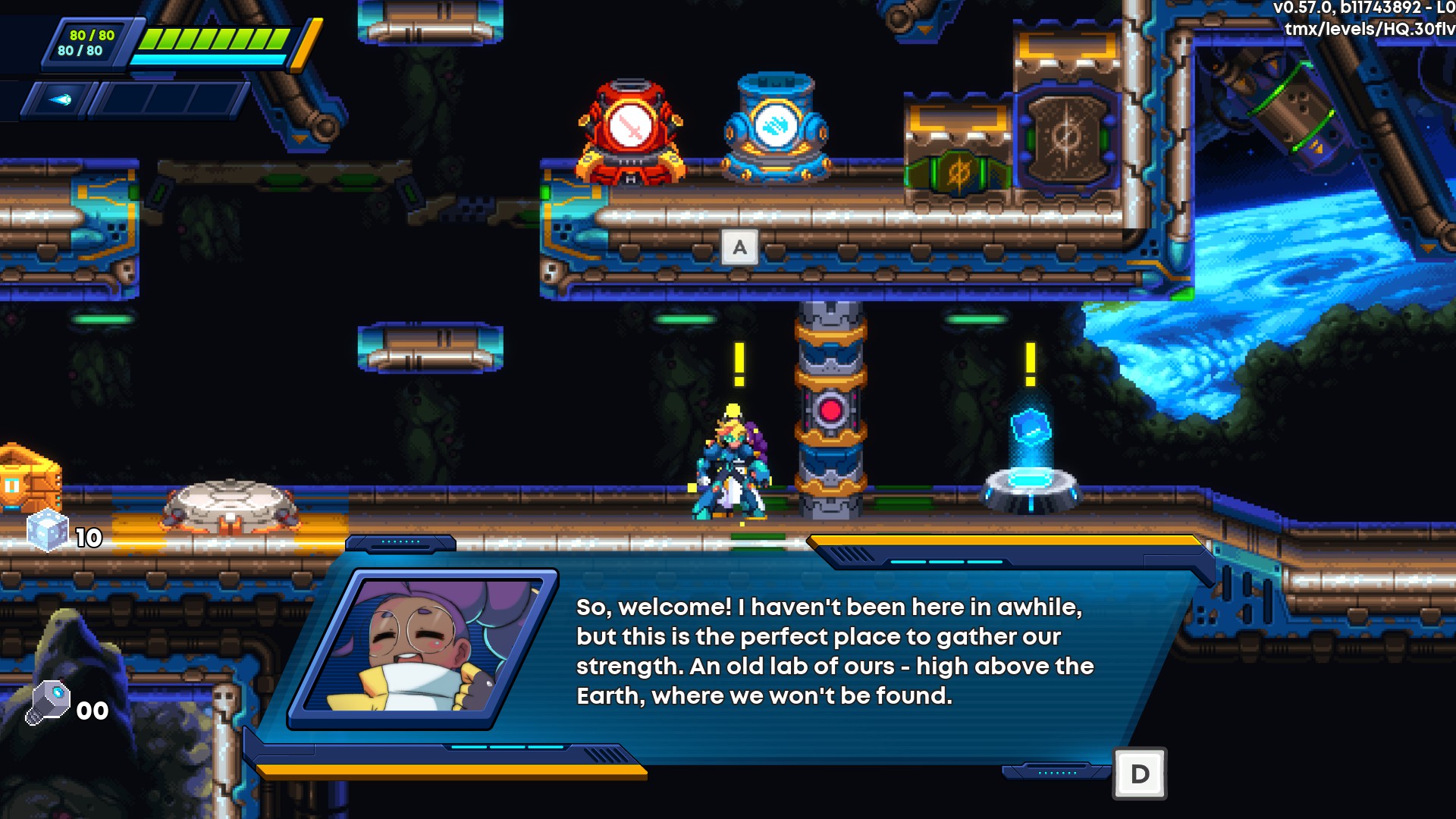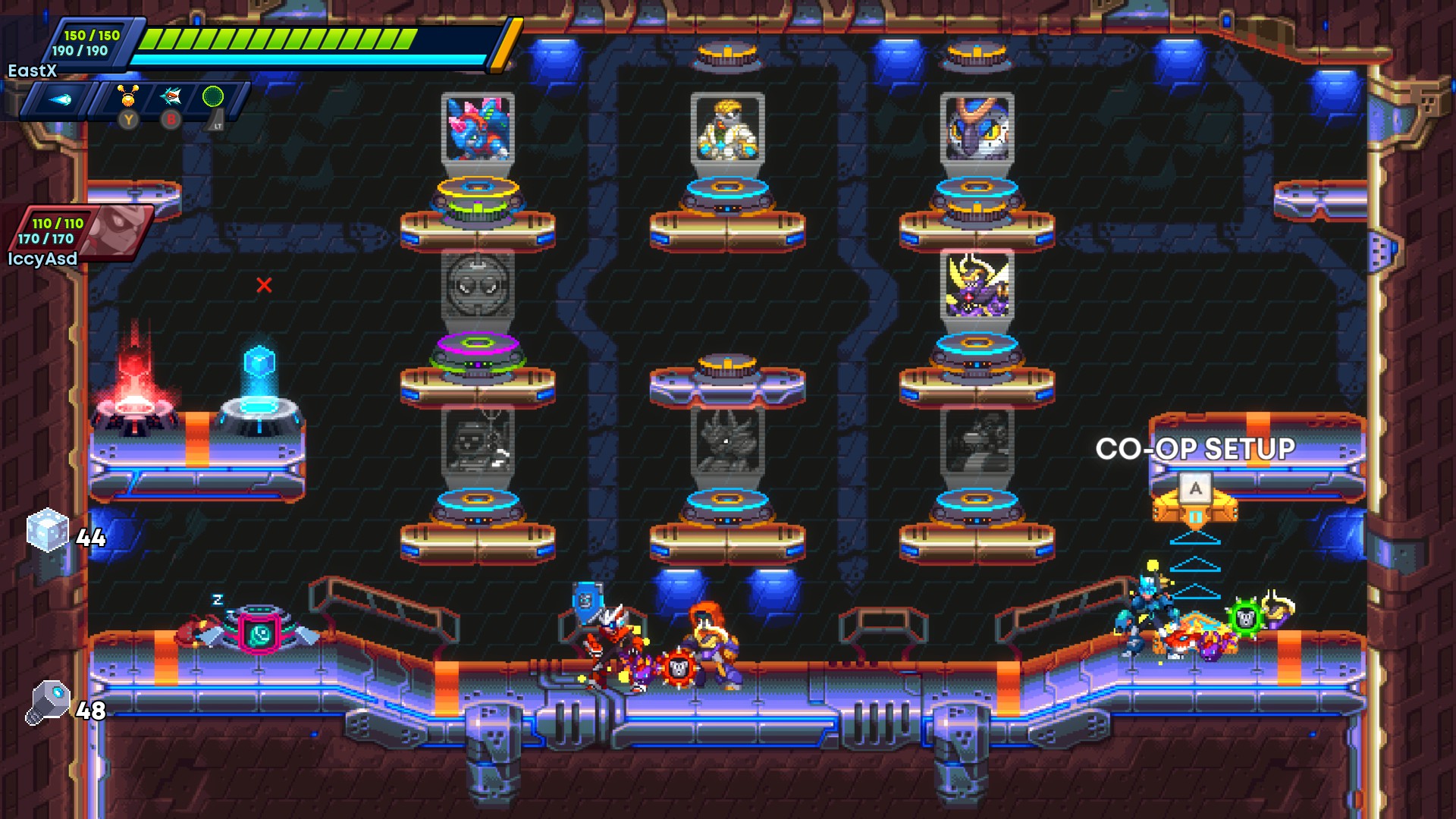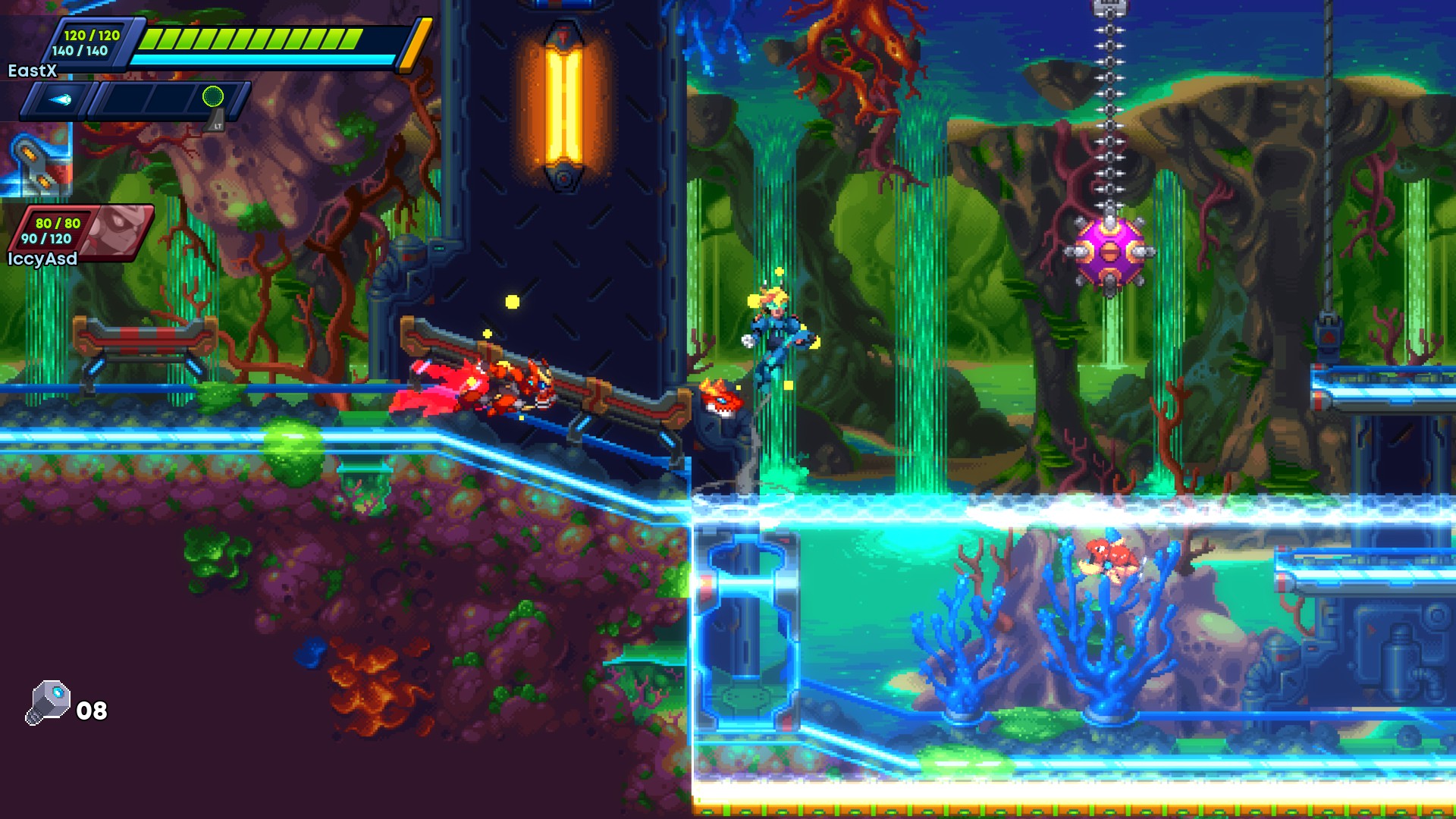Capcom has shown precious little interest in keeping the Mega Man franchise alive, hence it’s up to indie developers to carry the torch. Chief among those developers is Batterystaple Games, whose well-received 20XX first appeared on Steam in 2016 and made its way to consoles over time. After a period of early access, the sequel, 30XX has fully launched on Steam and Switch. The new game offers lots of new levels, weapons, and mechanics; a level creator, and 2-player local and online co-op support. It’s everything a Mega Man fan could want, but old-school difficulty limits the game’s accessibility.
30XX takes place a thousand years after the previous game. During the single-player tutorial, Ace, the Zero-style, melee-focused android awakens Nina, the first game's Mega Man-like protagonist from her extended stasis. Shortly thereafter, an evil scientist named Eleanor arrives to challenge the duo to find her lab. The two heroic robots must explore a variety of levels, find upgrades, and thwart a menagerie of memorable bosses in their fight to catch up to Eleanor and save the universe.

Whereas 20XX is strictly a Roguelike action platformer, 30XX lets players choose between two distinct modes: Standard and Mega.
Standard mode plays like the first game, allowing players to proceed through randomized stages set in 8 zones, with the next zone appearing in a random order. Standard is the roguelike mode, which means permadeath, so there are no extra lives and no continues. Being the main game mode, Standard has a more expansive hub than Mega Mode, with new elements popping up between runs. It’s clearly how 30XX is meant to be played, though Mega Mode might be slightly easier. Within Standard, players will eventually unlock a boss rush mode and the ability to play specific seeds (exact variants of randomized runs).

As for Mega Mode, players will start in a tiny hub that resembles the level select of classic Mega Man games. Within this mode, the lower zones are easier than the higher zones. The central portal will eventually unlock and lead to the last two stages. Off to the side, players can access the various upgrade vendors. Mega Mode doesn’t have permadeath, so dying just sends you back to the hub so that you can buy upgrades and try again without losing anything. This does make things easier because players can replay levels in order to earn more upgrades within the levels themselves and currency for spending in the hub. However, the game is still tough, especially the final zone.
Gameplay-wise, 30XX is a solid tribute to the Mega Man X series. Nina plays just like X, with the ability to rapidly fire her mega buster or charge it up for powerful blasts. She can wall-jump and dash across gaps or in the air by default. Later upgrades give her the ability to double jump or dash in different directions. As for Ace, he is a melee-centric character who fights with a sword, just like Zero. Ace is more challenging to play but deals greater damage.

Both characters can gain upgrades through a variety of systems. As with Mega Man, defeating a boss provides access to a weaker version of his weapon. Here, however, players can choose not to take the weapon if they prefer, turning it to a currency called scrap that can be spent on alternate upgrades. Boss weapons can be mapped to three buttons, and these weapons can be swapped at will. Powers, as they’re called, consume energy that can be replenished from the drops of downed enemies.
Other types of upgrades such as Augments can be acquired by completing optional challenge areas within levels, defeating optional minibosses, and/or by spending nuts (a type of currency dropped by enemies) at upgrade stations. Memoria is the metagame upgrade currency awarded from bosses and minibosses. The Memoria upgrade station in the hub provides permanent upgrades that carry over between Standard runs.
